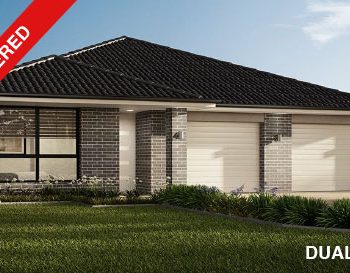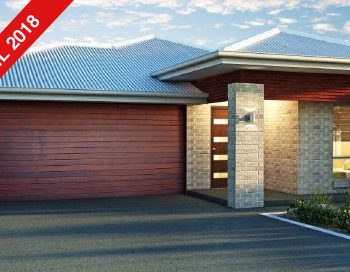Description
Lot 3 Ebbw Vale, Ipswich, QLD | Dual Occupancy
Dual Occupancy -
House Type: Dual Occupancy
Property Features
- Dual Occupancy
- 4 bed
- 2 bath
- 3 Parking Spaces
- Land is 506 square
- Floor Area is 217 square
- New Construction
- 3 Garage
- Split System Aircon
- Satelite
- Transit
- Bike
- Comparables
- Fast Facts
- About
- Property Facts
- Education
- Things to See and Do
- History
- Shopping
Fast Facts about Ipswich
- Population 190,000
- Median Property Price House: $330,000 Unit: $ N/A
- Median Rent House: $295 PW Unit: $245 PW
- Number of schools 15+
- Location West of Brisbane
Ipswich is an urban region in south-east Queensland, Australia, which is located in the south-west of the Brisbane metropolitan area. Situated on the Bremer River, it is approximately 40 kilometres (25 mi) west of the Brisbane CBD. A local government area, the City of Ipswich, which has a population of 190,000 (projected to grow to 435,000 residents by 2031) governs roughly the same portion of metropolitan Brisbane
The city is renowned for its architectural, natural and cultural heritage. Ipswich preserves and operates from many of its historical buildings, with more than 6000 heritage-listed sites.
Ipswich began in the 1820s as a mining settlement and was originally intended to be the Queensland capital but Brisbane was instead chosen because of its geographical accessibility for ships.
In 2015, Ipswich was named in the world’s Top 7 most Intelligent Communities by the Intelligent Community Forum (ICF) in New York. Source: Wikipedia
Ipswich is recognised for its important collection of historic buildings. Historic house types range from Early Colonial/Victorian (1850 onwards) to Queensland Bungalow (until 1935), with the city showcasing many markers and plaques outside heritage and historical locations.
The traditional Ipswich dwelling has always been a detached home on land, and is frequently portrayed in the paintings of D'Arcy Doyle, however this is changing as modern housing developments increase. The city is the fastest-growing area in SEQ.
Two major developments, underway at Springfield and Ripley, will be central to housing this growth. The multibillion-dollar Greater Springfield development was awarded World's Best Master Planned Community 2010 and is designed to grow to an ultimate population of 85,000, with a projection of 105,000 total residents living in the area by 2030. Greater Springfield is positioned as the gateway to the western corridor of the south-east. At 2,860 hectares it is the largest master planned city in Australia.
The Ripley Valley Development is master-planned to be a model community for a projected population of 120,000 people. Source: Wikipedia
Ipswich is home to dozens of primary and secondary schools, including Ipswich Grammar School, which was the first high school in Queensland (established in 1863). Ipswich Girls' Grammar School was established 1892. Tertiary education facilities include University of Southern Queensland, which has campuses at Springfield and Ipswich. TAFE Queensland South West has a campus at Bundamba and another in Springfield. Source: Wikipedia
Ipswich has more than 500 parks and conservation estates, including Nerima Gardens, which was designed in consultation with Ipswich’s Japanese sister city, Nerima. In 2015, Orion Lagoon opened in Springfield Central.
Brookwater hosts the Brookwater Golf and Country Club, designed by Greg Norman. The par 72 golf course measures 6,505 metres and has been voted as Queensland’s number one golf course in Golf Australia magazine’s best 50 courses. Source: Wikipedia
Prior to the arrival of European settlers, what is now called Ipswich was home to many indigenous language groups, including the Warpai tribe, Yuggera and Ugarapul Indigenous Australian groups. The area was first explored by European colonists in 1826, when Captain Patrick Logan, Commandant of the Moreton Bay penal colony, sailed up the Brisbane River and discovered large deposits of limestone and other minerals.
The town began as a limestone mining settlement and grew rapidly as a major inland port. Ipswich was initially named "The Limestone Hills" and later shortened to "Limestone", however in 1843 it was renamed after the town of Ipswich in England. The population was 932 in 1851 and had risen to 2459 by 1856. It became a municipality in 1858. Ipswich was a prime candidate for becoming the capital of Queensland, but Brisbane was instead chosen in 1859. It was proclaimed a city in 1904.
The city became a major coal-mining area in the early 19th Century, contributing to the development of railways in the region as a means of transport. The first recorded coal mines in the central Ipswich area started at Woodend in 1848.
From the 1840s onward, Ipswich was becoming an important river port for growing local industries like coal and wool from the Darling Downs and a regular paddlesteamer service from Brisbane Town, 'The Experiment', was established in 1846. This, and other steamer services, remained the primary form of mass/bulk transport between the two cities until 1876, when the construction of the original Albert Bridge, spanning the Brisbane River at Indooroopilly, completed the railway line begun between Ipswich and Brisbane in 1873.
Ipswich was proclaimed as a municipality on 2 March 1860 and became a city in 1904. Source: Wikipedia
Ipswich has a thriving town centre which hosts all shopping facilities required.
- About
- Bio
- Recent Listings
Glenn is a qualified Real Estate Agent, Mortgage Broker and Financial Planner. He has years of experience in these fields as well as property development. He is skilled at finding the best properties to fit your needs and requirements.
Read More




0 Comments